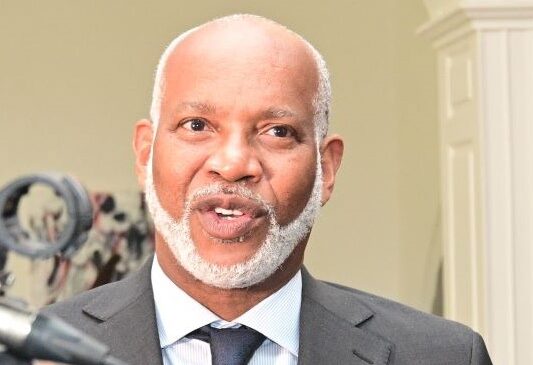Submitted by The People’s Democratic Congress (PDC)
 The huge and burgeoning financial debt across the personal, private, public and social sectors of Barbados is the second biggest political financial problem facing the country at this stage ( The biggest is TAXATION).
The huge and burgeoning financial debt across the personal, private, public and social sectors of Barbados is the second biggest political financial problem facing the country at this stage ( The biggest is TAXATION).
And, whether it is at the individual, household, organizational, institutional or governmental levels, or whether it is owed to local or external sources, it remains a very pervasive substantial obstacle to the further long term material productive growth and development of the country.
Whereas, there are two broad levels of financial debt in Barbados – (a), money for money debt, and (b), goods and services for money debt, that are invariably incurred on a daily basis by the said individuals, households, businesses, social clubs, government, the one broad level of debt that the PDC is focused on in this article- notwithstanding that there is a significant degree of interrelationship between itself and the other – is this particular money for money debt variable.
To get a sizable piece of the bigger picture of this disastrous alarming money for money debt situation as it stands now in Barbados, an online reading of the Economic and Financial Statistics of the Central Bank would show that total commercial bank liabilities at March 2010 were provisionally reported as BDS$11.5 billion (total commercial bank assets were about the same for that time), that total credit union assets/liabilities at December 2009 were BDS $ 1.3 billion, and that the gross central government debt at March 2010 stood at BDS $ 7.57 billion. These statistics come against the back drop that the GDP of Barbados is only about BDS $ 8.0 billion, and worse yet when the said document reveals that the total money supply is provisionally reported to be significantly less – BDS $ 3.69 billion as at April 2010.
AS well, we the members of the PDC are in this heightened state of mind primarily because of this still un-remedied, still growing money for money debt profile being as a direct consequence of the general use and circulation of money/value within the financial system in Barbados, in the first order, and the international financial system, in the second order, and because money – as a medium of exchange – has been made a critical component of this largely exploitative dehumanizing Euro-centric Westernist modal path of development for the vast majority of the Barbadian people.
Moreover, it can therefore be safely argued that the fundamental specific sources/causes of Barbados’ massive money for money debt problems are:
- The continued existence of the relevant historic but outdated financial laws and agreements giving rise to such debt;
- The great imbalance that exist between productive activity and non-productive activity in the country (in favor of the latter), as a factor of the use and production and circulation of general money/value nationally, and to a point whereby there is virtual private ownership of it esp. by elites, which as such goes way beyond its mere use as a medium of exchange, and as itself a measure of such commercial activities;
- The continued use of this back ward concept practice (debt) as a way of accounting/measuring still for the use/non-use of money in the running of the financial commercial business of individuals, households, businesses, social clubs and government.
The fact is that such and other apposite diabolical features remain at the core of Western Finance ideologies, philosophies and practices, and their own inherent models of financial development, as practiced within Barbados and many other jurisdictions.
Also, what is worse than the operational effects of the above stated fundamental causes and sources on the existing alarming national money for money debt situation in Barbados, are some of the following continuing destructive practices that have helped to cause the astronomical growth in this particular class of debt in the long term in the country:
- The countless repayments of money/value originally borrowed ( principals) from the local and international financial private public sectors by entities within the government and non-financial private sectors, but which in regard of the local jurisdiction itself already belong to the country ( individuals, households, businesses, social clubs, government collectively – not individually ).
- In respect of our local financial jurisdiction, the redundancy of repayment of this money/value “borrowed” that itself will eventually go back into the core financial system, and however it goes back therein.
- The hordes of payments or receipts of extra money income ( interests costs revenue charged accrued locally ) that are themselves based on the travesty illusion that local money makes local money and local money costs local money – as opposed to local money making foreign money, local money costing foreign exchange, etc.
- The idiocy of legions of borrowers and lenders in Barbados contracting more and more money for money debt esp. over the same amount of actual local money, or over the same portions of the local money supply in the country ( BDS $ 3.69 billion dollars).
Indeed, such and other unmentioned recurring effects are, yes, some of the same ones that will, in turn, help to cause this already disgraceful money for money debt in Barbados to have overwhelming, unwholesome, long term devaluing effects on the quantum amount of productive distributive incomes derived from the material financial sectors of this country, such that the higher and higher this debt is, and the payments are, and the longer and longer the payment schedules are, the greater, the more prohibitively costly the money value that is derived from the productive income earning categories of the country ( manufacturing, construction, agriculture, etc.), will be at any time when it is diverted to activity that is herein classified as non-productive activity in the country ( payment settling of debts, banking, retail consumption, etc.)
Such recurring effects also have adverse effects on planned investment and expenditure throughout the country.
To understand the very damaging effects of total money for money debt, and its wicked psycho-political support structures, on the present financial material depression in the country, a slight look back at the 1994 to 2008 period in Barbados is necessary to support such an understanding.
The then BLP government led many private financial and non-financial sector interests in implementing many expansionary growth policies, even counter cyclical policies in 2001-2002, which had the effects of lower unemployment, creating conditions for increased gross domestic capital formation, greater imports of goods and services, etc.
Throughout this period too there was also a general upward movement in the overall cost of living and of doing business in the country, esp with the implementation of the VAT in 1997/1998, and with the substantial increase in world oil and commodity prices in 2007. During this period there were also implemented fiscal and monetary measures to contain these upward costs – juxtapose with officialdom’s references to so-called inflationary trends – such as the implementation of the Cess Tax in mid 20s0s, the six increases in the minimum deposit rates in the period 2005 and 2006.
Notwithstanding that there were these and other fiscal and monetary measures implemented to moderate at certain points in time in this period “price” increases in the country, there still was left totally unchecked and un-managed, one of the biggest financial problems of the country – the matter of the gross government borrowings in this country, which saw the central government debt move from BDS $ 2.49 billion in 1994, to a staggering BDS $ 6.0 billion in March 2008 ( Economic and Financial Statistics of the Central Bank).
No wonder why then at this juncture, when the gross general government debt has risen to such obscene levels, that Standard and Poor’s has had to down grade Barbados foreign currency sovereign credit rating from BBB to BBB-, and to downgrade its local currency rating from BBB+ to BBB-, as a result of the country’s rising debt and the government’s failure to consolidate the fiscal deficit as promised (Barbados Today – 22/10/10).
Thus, it is very clear that both these joke DLP BLP parties, whilst in the Cabinet of Government, have never had a debt reduction management strategy in place to substantially lower the government’s debt over the last 17 years or so, nor has there been one emerging from out of the major corporate trade union sectors to substantially help in lowering individual, corporate, and social financial debt in the long run in this country.
What the PDC must state too is that, since 1994, as the size of the government has got bigger in proportion to the local private sector, as the government has continued to TAX and BORROW substantially in relationship to the overall size of the GDP, and as non-productive sector activity has become larger in relationship to the productive sector activity, et al, the greater the gross general government debt has been becoming, the less profit the private sector has been making, the less disposable income persons and businesses has been making, the greater the country has been in depending on the financial services sector, esp. the international financial services sector, as the country continues to go down deeper and deeper in the red with money for money debt.
Finally, in short, what is needed to reverse this very destructive diabolical unproductive money for money debt trend, and to help point Barbados in a debtless direction and on a path towards greater material financial growth and development, is the Abolition of those laws and agreements that have given rise to Repayable Institutional Productive Debt; the Abolition of Institutional Repayable Productive Loans; the increasing of the total amount paid in to institutional lenders on the principal of Non-Productive Repayable Loans received originally; the Abolition of Interest Rates, and in their places the right alternative systems implemented – many of which we have already spoken to.
So long.




The blogmaster invites you to join the discussion.